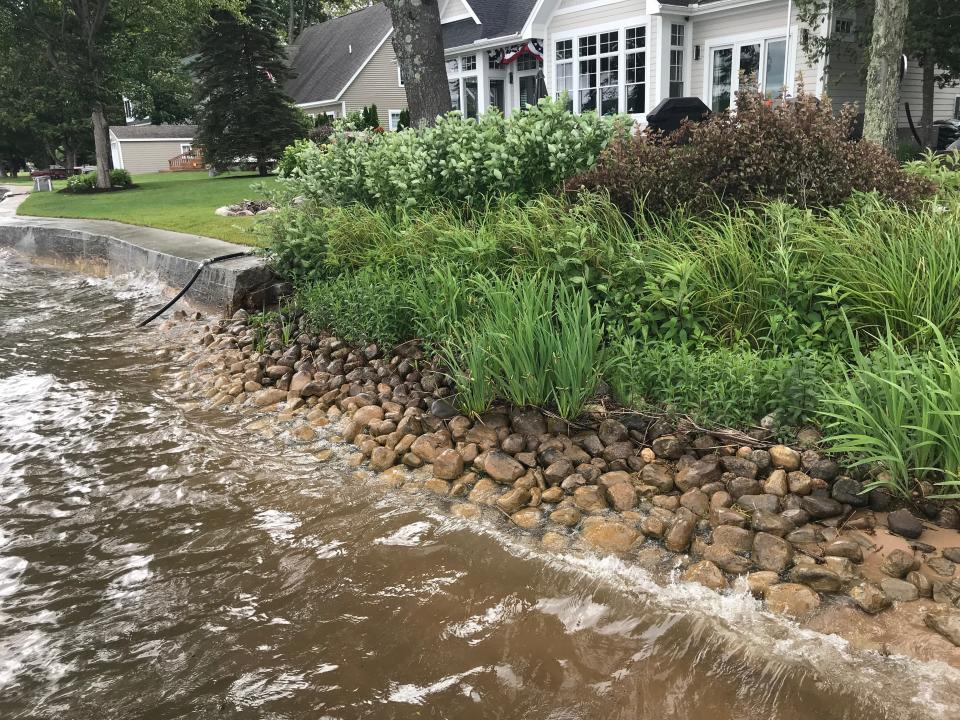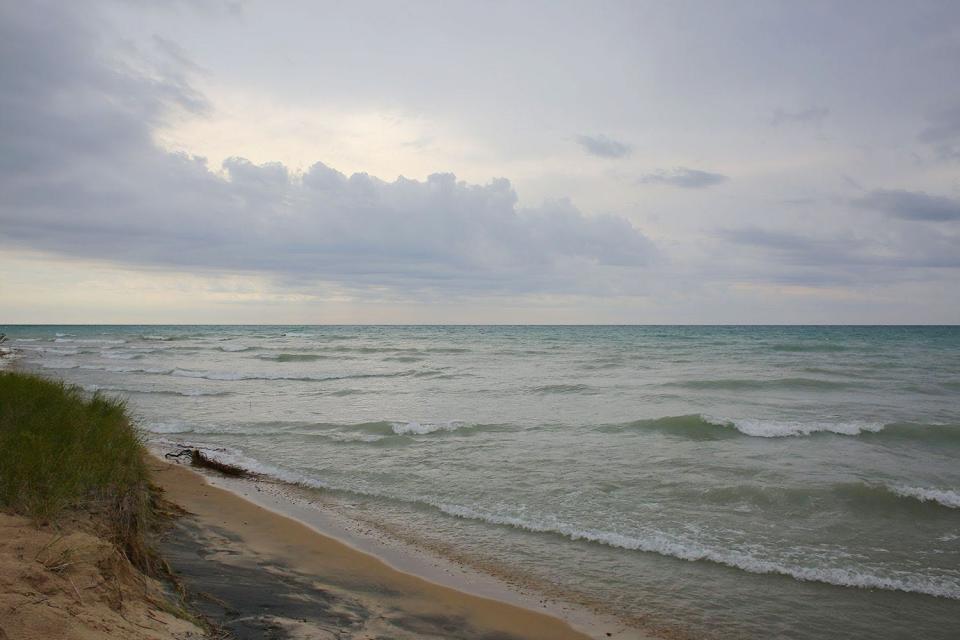Lake Michigan shoreline erosion continues, despite lower water levels

One of the biggest draws of northwest Michigan is the Lake Michigan coast. Homes, businesses and hiking trails set up along the shore for the stunning views and the lake breeze.
However, living along the lake comes with some risks, as many learned during the high water crisis that lasted from late 2019 through 2021.
Shore erosion is a natural process for lakes, but one that was made worse during the crisis when high water levels due to increased rainfall were risking damage to homes, businesses and heavily used land trails.
More: Lake Charlevoix Day event promotes healthy shoreline living
Erosion can lead to reduced quality of habitat for fish and other aquatic life, decreased water clarity because of suspended sediment and lost property. However, some projects meant to slow down erosion can also cause problems, according to Noah Jansen, restoration coordinator for Tip of the Mitt Watershed Council.
“There's a natural connection between the lake and the shore that a lot of people don't realize or or they haven't really considered it. So a lot of animals, they need both time in the water and time on land,” Jansen said.
“You think of turtles that spend most of their time in water and then come on shore to lay their eggs or to bask. Frogs and toads that need to move in and out of water to bask and get warm in the sun. So there's a lot of wildlife that have trouble getting out of the water if you have a seawall and up onto the land to complete their life cycle or to do what they need to do.”
More: How will Northern Michigan shorelines look in the future? It depends what we do now
Ways of slowing down erosion include hard armor projects like vertical steel walls with stone placed in front of them and more natural methods like woody debris and vegetation to break up wave energy and help to prevent damage.
According to Jerrod Sanders, assistant director of the Water Resource Division of the Michigan Department of Environment, Great Lakes and Energy (EGLE), construction permits for shoreline work along the Great Lakes skyrocketed in 2020 during the high water crisis to 2,238 permits issued, compared to 730 the previous year.

To receive a permit for shoreline work, the applicant must prove that there is need for the work in order to prevent damage to a home or infrastructure and the applicant must use the least impactful method that solves the problem. There are no restrictions on who the applicant may hire to complete the work.
More: Leveling up: East Jordan sandbag business works to grow
After proving that there is a need, the applicant must agree that the project will not have unreasonable, negative impacts on the water resource and that it will not violate public trust, meaning it will not damage the lake water that is considered property of the people of Michigan.
Many of the permits issued during the crisis included hard armor projects, however, near the end of the crisis, EGLE began to deny more hard armor projects in favor of temporary measures like sand bags that served the same purpose, but didn’t make permanent changes to the shore.
While water levels of the Great Lakes and connected inland lakes nearby have gone back down, they will eventually rise again and some shoreline projects can lead to worse erosion over time.
More: Water levels have decreased in Great Lakes, but there's no guarantee trend will continue
Subscribe: Check out our offers and read the local news that matters to you.
“If you have a seawall for instance, that can exacerbate erosion problems at the foot of the seawall because you get waves there,” Jansen said. “They basically hit that sea wall, they reflect and go in different directions and one of those directions is down, so you get scouring of the lake bottom, and that can damage the habitat for fish and wildlife.”
That erosion issue is the reason EGLE requires stone be placed in front of vertical seawalls.
“Vertical seawalls tend to reflect wave energy and pass it on down to the next property. If you put a slope stone reinvestment in front of it, or instead of that, it tends to break that energy up a little bit better,” Sanders said. “So it's better for the shoreline processes and better for the lake than some other hard armor alternatives.”
Even with the risks associated with lakefront properties, they remain highly in demand among home buyers. Sanders said he would like to see more education pushed by EGLE so that people understand before buying that having a lakefront property will require investing in shoreline protection.
“So people were buying some of these properties where they had 100 or 200 feet of beach in front of their property. And really it's just maybe that they didn't understand that the bluff that that house they were buying is on, that's really the active place of erosion,” Sanders said.
“And so I think that's an area where we can do a lot better, trying to educate people about what is happening on the lakeshore and that you might have 200 feet of beach when you buy at low water levels and the shoreline might be right up against the home’s foundation at high water levels. That's how the Great Lakes have operated for about 3,000 years.”
While erosion can cause issues for the lake and lakefront infrastructure if not addressed, it is still a natural and normal process that is part of the cycle of the lakes.
“Not only is that a normal, natural process, it isn't really preventable,” Sanders said. “So even when we use these hard armor structures, we can slow that long term process down, we can't stop it. There is no way to lock the Great Lakes coastline where it is forever.”
Contact reporter Tess Ware at tware@petoskeynews.com. Follow her on Twitter, @Tess_Petoskey
This article originally appeared on The Petoskey News-Review: Lake Michigan shoreline erosion continues, despite lower water levels
